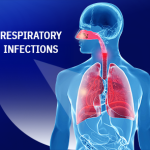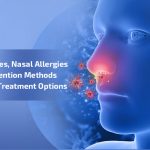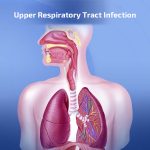Asthma
Asthma — Have you ever felt like your airway is blocked, congested, and filled with mucus? As if every breath you take is a struggle you’re forced to endure? This is the daily reality for millions of people around the world living with asthma. According to estimates by the World Health Organization, asthma affected nearly 262 million people in 2019 and was responsible for approximately 455,000 deaths.
Asthma is a chronic condition that significantly impacts quality of life. It requires a deep understanding and effective management to prevent it from worsening and threatening your respiratory health. In this article, you’ll learn about its causes, symptoms, treatment options, and how to live a normal life with asthma.
- Asthma and Asthma Attacks
- What Is an Asthma Attack?
- Causes of Asthma
- Asthma Triggers and Risk Factors
- What Are the Symptoms of Asthma?
- How Is Asthma Diagnosed?
- How Long Does an Asthma Attack Last?
- Types of Asthma
- What Foods Should Be Avoided by People with Asthma?
- The Difference Between Allergic Bronchitis and Asthma
- Asthma Treatment
Asthma and Asthma Attacks
Asthma is a chronic respiratory disorder that affects the airways in the lungs. These airways become inflamed, narrowed, and produce excessive mucus, making it difficult for air to pass through. The condition does not always present itself continuously but rather in sudden episodes of varying severity, known as asthma attacks.
People with asthma often experience intense shortness of breath and persistent coughing, especially at night or in the early morning. Asthma does not affect only a specific age group; it can occur in both children and adults, with symptoms potentially appearing early in life or developing later on.
Although asthma is not contagious, it is one of the most common chronic diseases, particularly among children. However, individuals with asthma can lead completely normal lives if they follow a proper treatment plan and adhere to medical guidance.
What Is an Asthma Attack?
In normal breathing, the muscles surrounding the airways remain relaxed, allowing air to pass in and out of the lungs with ease. During an asthma attack, however, three major changes occur in the airways:
Bronchospasm: The muscles around the bronchial tubes tighten, reducing the airway diameter and restricting airflow.
Airway Inflammation: The inner lining of the airways swells, making it even harder for air to move in and out of the lungs.
Excess Mucus Production: The body produces thick mucus in large amounts, further blocking the air passages.
These changes result in severe breathing difficulty, often accompanied by a distinct wheezing sound during exhalation. In some cases, medical intervention may be necessary if the attack cannot be controlled.
Causes of Asthma
The exact cause of asthma remains unclear, but most studies suggest that it results from a complex interaction between genetic and environmental factors. The risk of developing asthma increases in the following cases:
Family history of asthma or allergies: Individuals with first-degree relatives who have asthma, especially a parent, are more likely to develop the condition.
Allergic conditions: Having conditions such as eczema or allergic rhinitis (hay fever) may indicate a shared immune predisposition.
Viral infections in early childhood: Certain respiratory viruses, like respiratory syncytial virus (RSV), can impact lung development and increase asthma risk.
Urban living: Higher asthma rates in urban environments point to the possible role of pollution and lifestyle-related factors.
Obesity: Excess weight can affect lung function and worsen inflammation, contributing to the onset of asthma.
Premature birth or low birth weight: These factors may impair lung development, increasing susceptibility.
Gastroesophageal reflux disease (GERD): This condition can irritate the airways and trigger symptoms.
Asthma Triggers and Risk Factors
Triggers are substances or conditions that irritate or narrow the airways, worsening asthma symptoms. The most common triggers include:
- Allergens: Such as pollen, dust mites, mold, pet dander, and cockroach debris.
- Respiratory infections: Colds, flu, and other viral infections can provoke severe attacks.
- Cold air or sudden temperature changes.
- Strenuous physical activity, especially in cold or dry environments.
- Environmental pollutants: include smoke, chemical fumes, and vehicle exhaust.
- Certain medications, Such as aspirin, nonsteroidal anti-inflammatory drugs (NSAIDs), and beta-blockers.
- Food additives, such as sulfites found in dried fruits, alcoholic beverages, and some processed foods.
- Occupational exposure: Working in environments with chemicals, industrial dust, or irritating vapors.
- Smoking and secondhand smoke exposure.
- Living in areas with high levels of air pollution.
What Are the Symptoms of Asthma?
The severity and frequency of asthma symptoms vary from person to person. Some may experience symptoms intermittently, while others may suffer from frequent attacks that worsen at night, during physical activity, or after exposure to triggers such as dust, cold air, or viral infections.
Here are the most common symptoms observed in people with asthma:
Shortness of breath: A troubling sensation as if you can’t get enough air into your lungs.
Persistent coughing: Often worse at night or upon waking up; for some individuals, it may be the only symptom.
Wheezing: A whistling or squeaky sound when breathing, considered a hallmark sign of asthma, especially in children.
Chest tightness or pain: A feeling of pressure or spasm in the chest, especially during deep breathing.
Sleep disturbances: Caused by nighttime coughing or difficulty breathing.
General fatigue: Due to the extra effort the body exerts to breathe properly.
There are also warning signs that indicate worsening asthma attacks and a need for immediate medical attention, including:
- Increasing frequency and intensity of symptoms.
- Noticeable decline in airflow and more pronounced breathlessness.
- Frequent use of rescue inhalers or bronchodilators with minimal relief.
- Difficulty speaking or walking due to severe shortness of breath.
- Blue tint in the lips or fingernails due to low oxygen levels.
- Sudden dizziness or confusion.
How Is Asthma Diagnosed?
Asthma diagnosis requires a thorough clinical evaluation that includes medical history, physical examination, and a series of respiratory and laboratory tests. Since its symptoms can overlap with other conditions like bronchitis or chronic obstructive pulmonary disease (COPD), a careful assessment is essential. The diagnostic process generally includes:
Medical history review: A detailed analysis of symptoms, their frequency, and relation to environmental triggers or physical activity.
Family history: Identifying whether first-degree relatives have a history of asthma or allergies.
Physical examination: Includes examining the upper respiratory tract and chest, and listening for wheezing or abnormal breath sounds.
Pulmonary function tests:
Spirometry: The primary test to assess airway obstruction. It measures the volume and speed of exhaled air after a deep breath.
Bronchodilator responsiveness test: Evaluates lung function before and after using a bronchodilator. Improvement in lung performance indicates asthma.
Allergy testing: Includes skin or blood tests to identify reactions to specific allergens.
Chest X-ray: Performed to rule out other lung conditions that may mimic asthma symptoms.
How Long Does an Asthma Attack Last?
The duration of an asthma attack varies from one person to another and from one episode to the next. In some cases, symptoms such as wheezing, coughing, and shortness of breath may appear suddenly and subside within minutes after using appropriate treatment. In other cases, symptoms may gradually worsen over hours or even days if not managed correctly.
Early warning signs of an asthma attack may include mild shortness of breath, a persistent dry cough, or an itchy sensation in the chest or neck, symptoms that often appear early, especially in children.
In moderate attacks, the person may continue to struggle with breathing even while sitting upright, relying on neck and chest muscles to help draw in air. This is often accompanied by rapid heartbeat and excessive sweating due to the physical effort and anxiety involved.
In severe attacks, breathing becomes so restricted that the individual may only be able to speak in short, broken phrases. Wheezing may decrease or even disappear as the airways become severely narrowed. Signs of oxygen deficiency, such as bluish lips or extremities, confusion, or lethargy, can appear and indicate a medical emergency requiring immediate intervention to prevent life-threatening complications.
Types of Asthma
Asthma is not a one-size-fits-all condition; it is categorized into several types based on triggers and symptoms. Identifying the specific type helps tailor treatment plans more precisely to the individual’s needs.
Allergic Asthma
This is the most common type of asthma and is triggered by an immune response to allergens such as:
- Pet dander
- Pollen
- Dust mites
- Certain foods
It often affects individuals with a history of other allergic conditions like eczema or hay fever. Symptoms may be seasonal or persistent, depending on exposure to allergens.
Non-Allergic Asthma
This form occurs without identifiable allergens and typically begins later in life. It is less common and often more difficult to control with standard anti-allergy medications.
Occupational Asthma
Triggered by prolonged exposure to irritants in the workplace, such as:
Industrial dust
- Paint fumes
- Chemical substances
- Animal proteins (like latex)
- Flour dust or cleaning agents
Symptoms usually worsen during working days and improve during rest days.
Exercise-Induced Bronchoconstriction (EIB)
This type of asthma is brought on by physical exertion, especially in cold or dry environments. Symptoms typically begin 5:10 minutes after starting exercise and can last up to 15–30 minutes after stopping.
Aspirin-Exacerbated Respiratory Disease (AERD)
A rare but severe form of asthma triggered by aspirin or nonsteroidal anti-inflammatory drugs (NSAIDs) like ibuprofen. Many individuals with AERD also suffer from chronic nasal polyps.
Nocturnal Asthma
Symptoms worsen at night, affecting sleep quality. Common triggers include:
- Acid reflux
- Dust mites
- Low nighttime cortisol levels
- The body’s natural circadian rhythm affecting lung function
Seasonal Asthma
This type is linked to specific times of the year, typically during pollen seasons. Symptoms may appear only in spring or autumn and subside during the rest of the year.
What Foods Should Be Avoided by People with Asthma?
While diet is not a substitute for medication, a balanced and mindful nutritional plan can play a supportive role in easing asthma symptoms and improving overall quality of life. Some foods contain natural anti-inflammatory compounds that help strengthen the immune system and reduce airway irritation, while others may trigger or worsen respiratory episodes. That’s why it’s essential for individuals with asthma to be aware of what to include and what to limit in their daily diets. Below is a detailed list of recommended foods and those that may aggravate symptoms, with an emphasis on building a lung-supportive eating routine.
Recommended Foods
A diet rich in anti-inflammatory and antioxidant nutrients can support respiratory health and potentially reduce asthma attacks:
Fruits and leafy vegetables:
Rich in vitamins C and E, beta-carotene, and lutein, these help combat inflammation and boost lung function. Examples include: oranges, grapefruit, spinach, kale, sweet potatoes, carrots, and tomatoes.
Nuts and seeds:
A source of omega-3 fatty acids, vitamin E, magnesium, and zinc, which support airway health. Include walnuts, almonds, flaxseeds, sunflower seeds, and pumpkin seeds.
Fatty fish:
Such as salmon, sardines, and tuna—excellent sources of EPA and DHA, which are powerful anti-inflammatory omega-3 fatty acids.
Herbs and spices:
Turmeric (curcumin), ginger, garlic, cinnamon, and black pepper contain compounds that reduce inflammation in the lungs.
Whole grains:
Oats, brown rice, quinoa, and barley provide dietary fiber that supports gut health and reduces oxidative stress.
Legumes:
Beans, lentils, and chickpeas are rich in plant-based protein and magnesium, with added benefits from natural fermentation.
Fermented dairy products (probiotics):
Yogurt and kefir help maintain gut microbiota balance, which may in turn help reduce lung inflammation.
Green tea:
Contains anti-inflammatory compounds that may help relax the airways and strengthen the immune system.
Foods to Limit or Avoid
Processed and fried foods:
Often contain unhealthy fats and allergens like acrylamide, which can trigger inflammation.
Excessive sugar and sweetened beverages:
Can weaken the immune system and increase general inflammation.
Dairy products:
May promote mucus production, especially in children. Best consumed with caution or replaced with plant-based alternatives.
Caffeine:
May stimulate the airways; the recommended daily intake should not exceed 200–300 mg (roughly two cups of coffee).
Common allergens:
Such as eggs, wheat, soy, tree nuts, peanuts, and shellfish. Consult a doctor for allergy testing and elimination if necessary.
Sulfites and preservatives:
Found in dried fruits, pickled foods, wine, and some processed items, and may provoke asthma in sensitive individuals.
Gas-producing foods:
Like cabbage, onions, legumes, and carbonated drinks—these may cause bloating and put pressure on the diaphragm, affecting breathing.
By maintaining a balanced diet that focuses on beneficial foods and avoids dietary triggers, individuals with asthma can help reduce inflammation and the frequency and severity of attacks.
The Difference Between Allergic Bronchitis and Asthma
Both asthma and allergic bronchitis (or respiratory allergies) are common respiratory disorders and are often confused due to overlapping symptoms. However, each condition has distinct characteristics.
Asthma is a chronic inflammatory disease of the airways, characterized by bronchial muscle constriction. It may or may not be related to allergic triggers. In contrast, allergic bronchitis (allergic rhinitis or respiratory allergy) is an exaggerated immune response to typically harmless substances such as dust, pollen, animal dander, or mold, leading to inflammation of the upper and lower respiratory tracts.
Allergic bronchitis is directly linked to environmental triggers and tends to appear in certain seasons (e.g., spring) or after exposure to specific allergens.
Asthma symptoms include persistent coughing (especially at night), chest tightness or pain, wheezing, and shortness of breath, and may escalate into severe asthma attacks.
Allergic bronchitis symptoms usually involve a runny nose, sinus congestion, itchy nose and eyes, frequent sneezing, and may be accompanied by mild coughing or slight shortness of breath.
Allergies can trigger asthma symptoms, this is known as allergic asthma. However, having asthma doesn’t necessarily mean the person has an allergy. Most allergic asthma attacks begin as an immune response to a specific allergen, while not all asthma triggers cause this type of reaction.
Asthma Treatment
While asthma cannot be fully cured, it can be effectively managed, allowing individuals to live active, safe lives through a carefully planned combination of medications and strategies. Treatment options include:
Short-acting bronchodilators:
Used for immediate relief of acute symptoms. Best taken as needed, and repeated after 20 minutes if symptoms persist.
Inhalation devices and medication delivery techniques:
Simple devices used with asthma inhalers to ensure effective delivery of medication to the lungs and prevent medication loss in the mouth. These devices are especially important for children and in emergency situations.






